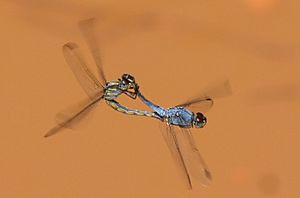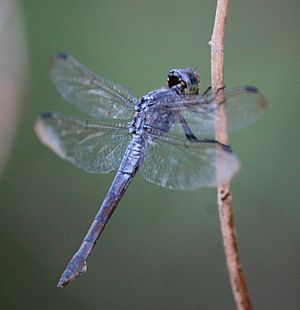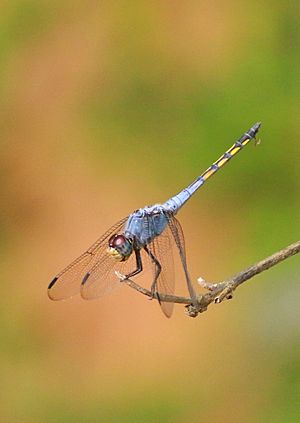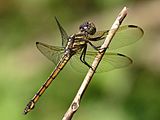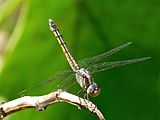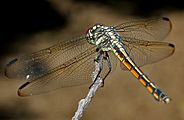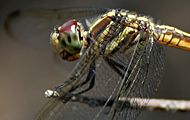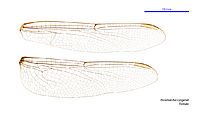Potamarcha congener facts for kids
Quick facts for kids Potamarcha congener |
|
|---|---|
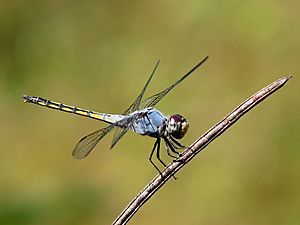 |
|
| Male, taken at Kadavoor, India | |
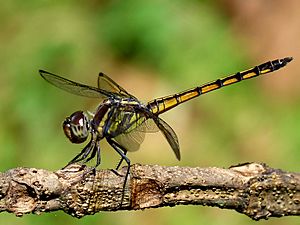 |
|
| Young male, taken at Kadavoor, India | |
| Conservation status | |
| Scientific classification | |
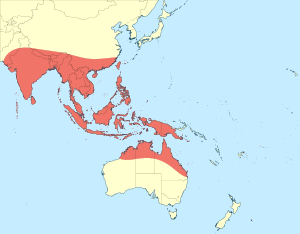 |
|
| Synonyms | |
|
Potamarcha congener is a type of dragonfly. It belongs to the family Libellulidae. This dragonfly was first officially described in 1842. It is one of two species in its group, called Potamarcha. The other species is Potamarcha puella.
Where This Dragonfly Lives
The Potamarcha congener dragonfly is very common. You can find it in many parts of the world. Its home range includes South Asia, South-East Asia, and Oceania. This means it lives in countries like India, Indonesia, China, Australia, and Vietnam.
Because it is found in so many places, this species is not considered endangered. The International Union for the Conservation of Nature says it is of "Least Concern." This is good news for the yellow-tailed ashy skimmer!
What This Dragonfly Looks Like and Where It Lives
Potamarcha congener has a few common names. People call it the yellow-tailed ashy skimmer, common chaser, or swampwatcher. It is a medium-sized dragonfly. Its body is bluish-black near the head. Its tail is yellow with black marks.
The face of this dragonfly can be yellowish-green to dark brown. Its eyes are reddish-brown on top. They are bluish-grey underneath.
- Male Dragonflies: Adult males have a bluish powder-like coating. This covers their upper body and the first part of their abdomen. Young males show yellow marks through this coating. The rest of their abdomen is black with orange marks. The last two parts are completely black.
- Female Dragonflies: Females have yellow and black stripes on their sides. Their abdomen is black with dull orange marks. They have special flaps on the sides of their eighth body segment. These flaps might help them hold eggs when they lay them.
You can find these dragonflies in areas with standing water. They like places near small ponds or rice fields. They also live near marshes where they lay their eggs.
Gallery



